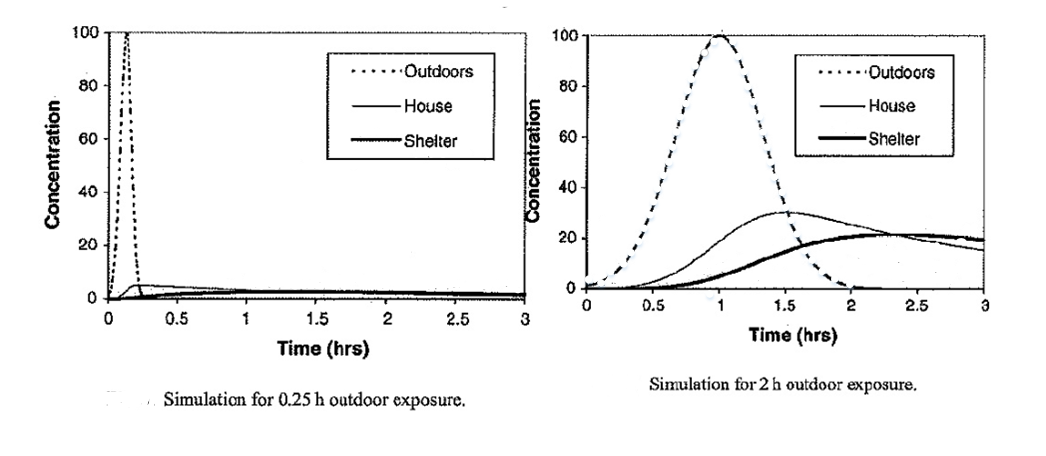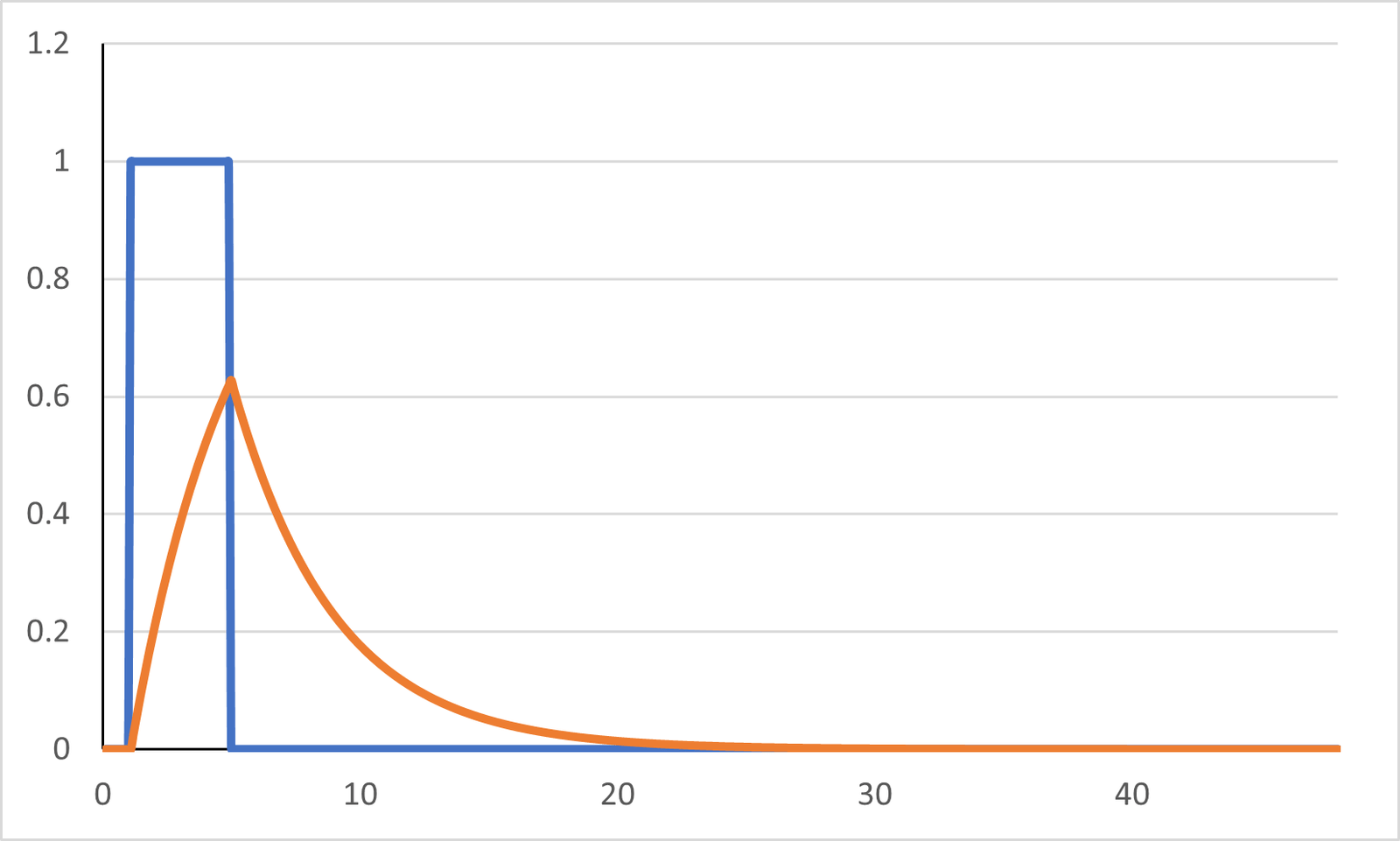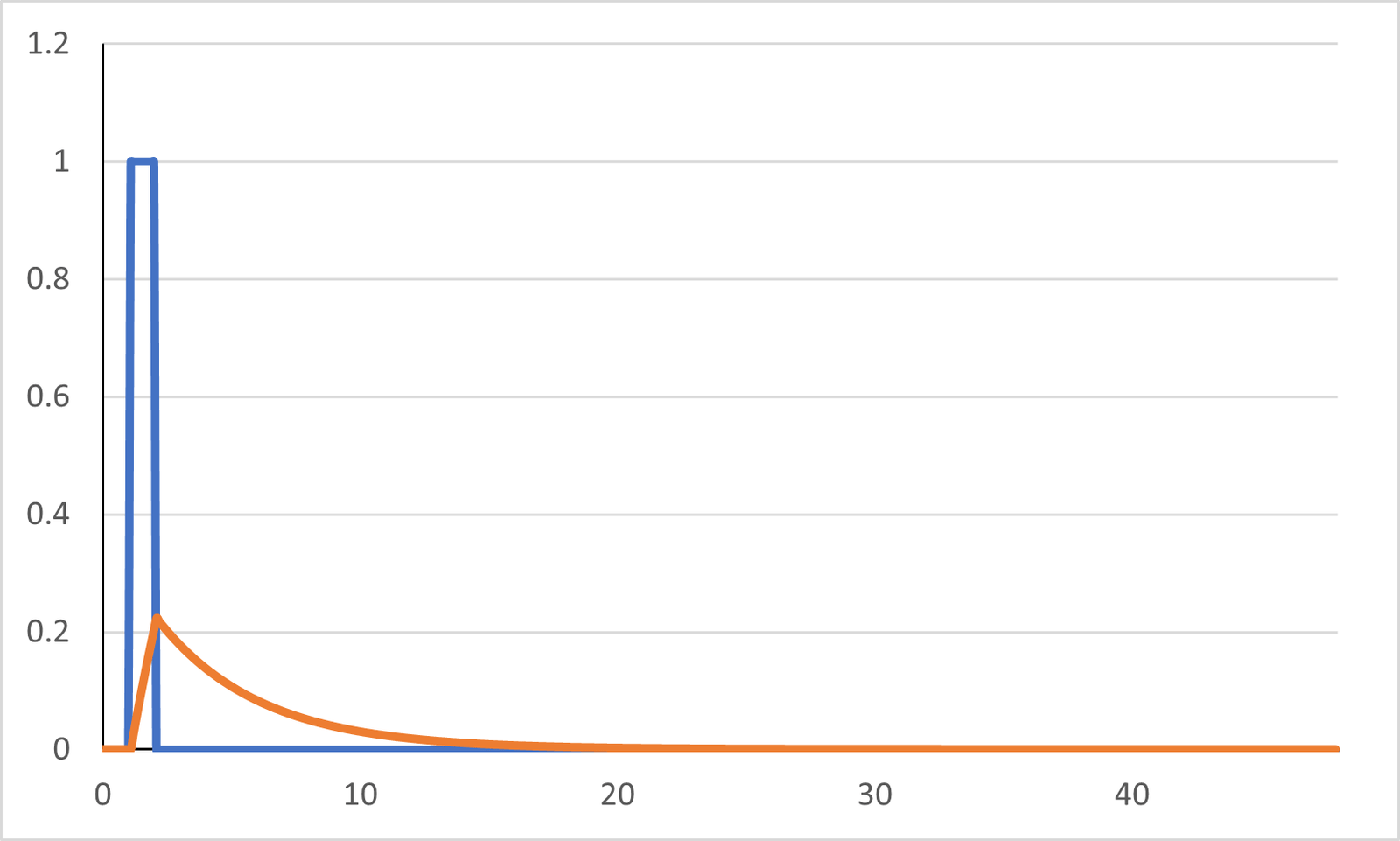Shelter Science
As a stand-alone action, sheltering-in-place can be used to provide protection against external radiation from airborne gases and particles which have been deposited on the ground in inhabited areas. The dose reduction factors (DRF) for external gamma dose (derived solely on the basis of a literature review) are 0.15 for typical residential brick-built homes and 0.05 for multi-storey buildings. Buildings can also slow down the rate of ingress of radioactive material that could be inhaled. A DRF of 0.6 (derived on the basis of a combination of modelling and literature review) should be assumed for inhalation dose to an individual sheltering during the entire passage of the plume, until both the indoor and outdoor air concentrations fall back down to (or close to) zero, with no opening of windows and doors to the external environment (and under such circumstances the DRF remains constant irrespective of the release duration)
PHE-CRCE-049, Public Health Protection in Radiation Emergencies.Sheltering is likely to be the optimum protective action where:
- The release is dominated by noble gases - by reducing the external dose;
- The release is likely to lead to small doses that make evacuation disproportionate;
- The release occurs without warning and is likely to be of short duration so that there isn’t the time to effect evacuation;
- Where evacuation is not possible or would entail considerable risk to the evacuees.
It is important to note that the protection offered by a building against inhalation dose depends on several factors including the airtightness of the building, the weather conditions,
the duration of the release and the duration of the exposure. A paper on this topic [2] suggests that protection factors between 5.1 and 8.7 (mean 6.3) for a two-hour exposure to a
two-hour release and between 2.9 and 4.7 (mean 3.5) if the exposed person stays in the building for the hour after the plume has passed. This shows that any number used in planning
is somewhat arbitrary and that it would be important to ask people to ventilate their houses soon after the plume passes, which would not be easy to get right.

It is worth noting that at least some of the advice available on American web-sites is appropriate for households downwind of a nuclear bomb which may be expected to produce far more "fallout", that is highly radioactive solids, than a credible accident at a nuclear licensed site. While there is probably no harm in building a tent under the kitchen table it is probably an over-reaction to a radiation emergency.
Simple mathematical model
You can gain a simple understanding of the value and limitations of sheltering as a way of reducing inhalation dose by using a simple two box model considering outside and inside where the rate of change of the concentration inside is given by the equation: dI/dt = - λ I + λ O
Where I is in indoors concentration and O is the outdoors concentration
This assumes the same rate of transer in and out i.e. the pressure isn't changing.




.
The first of these diagrams shows the effect of a constant raised outdoor concentation (Blue).In this case the indoor concentration (Red) rises to equal the outdoor. The time taken for this depends on the number of air changes an hour between the inside of the house and the outside. The examples here are set to 4 air changes an hour with the x-axis in hours.
The second diagram shows a four hour release and the third a 15 minute release, both with the air concentration falling in zero instantly. This shows that the internal concentration does not catch the external and starts to drop as soon as the external levels drop. This suggests that after the release people should be asked to air their houses rather than remain in shelter.
The fourth diagram shows the effects of a more gradual decrease in the external concentrations.